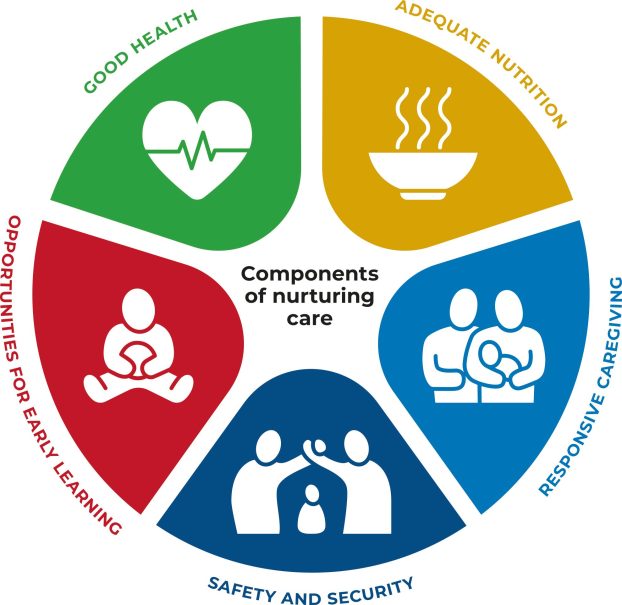Early learning: Every child deserves access now. Here’s how we can make that happen

The Final Report from the Productivity Commission (PC) into Early Childhood Education and Care was released last week. This two-part series unpacks the Commission’s proposed road map that involves many stages over the next 12 years to achieve universal access to early learning.
This is where all children can attend three days a week, regardless of location, ethnicity, special educational needs, family income, or parent’s work or study schedules.
Universal access is critical because research shows access to early learning improves children’s chances of a good start to school and increases their ability to flourish into adulthood.
The PC said the recent improvements in wages through the Fair Work Commission will assist with the attraction and retention of educators. The Commission states these recent rises are only one step and that future awards need to consider the 20 per cent pay difference and poorer conditions between the school and early learning sectors, even for educators with the same qualifications. It also recommends registration be the same to improve status for early childhood educators.
These are all excellent recommendations, but many educators continue to leave a sector in crisis before the recommendations are implemented.
Why is the sector in crisis?

At its heart, the early childhood education and care sector is supposed to provide opportunities for early learning. This is one of the key components of the internationally
accepted Nurturing Care Framework by the World Health Organisation, World Bank Group, and UNICEF. This framework is designed to show how children’s health and wellbeing is best supported to ensure children reach their potential.
Figure 1: Nurturing Care Framework
In Australia, children and their families face many barriers to these opportunities, as shown in the table below. These include affordability, high levels of privatisation, a lack of services and educators, complex funding and access to funding, extra challenges in regional, rural and remote (RRR) communities, and access to inclusion support.
In the table below, I provide information from reports, government departments, agencies, and organisations on these eight barriers. To illustrate this, I also provide either data from our mixed-methods online survey study involving 82 Australian educators or, where indicated, publicly available data. In the final column, I summarise what the PC states or recommends the Government to do.
Barriers to early learning and how to overcome them
| Barriers to early learning | Information | Data | Productivity Commission (PC) responses |
| 1. Affordability | Australia is second only to Switzerland in its high costs of early childhood education and care fees. |
“It’s very sad and hard for me to share this story. We have no support and can’t afford daycare for my 11- month-old boy. I work casually and I’m 8 weeks pregnant. We have to get an abortion because we don’t get any support.” (The Parenthood, p. 33). |
The PC recommends free services for low- income families, with fees rising for those with higher incomes. |
| 2. High levels of privatisation |
Australia has some of the highest levels of privatisation of early learning services in the world. In 2020, 49% of providers were private for- profit, and about a third of these were large providers with 25 or more services. |
Early childhood education and care (ECEC) is big business. The sector turns over $14 billion annually across 16,000 centres providing long day care (LDC), preschool and out of school care. The importance of giving young Australians the best start in life and encouraging workforce participation is recognised in the public funding that sustains the sector, currently around $11 billion per annum. This is distributed to providers ranging from council-run kindergartens to stock market-listed early learning chains. Among The PC recommends incentives for local parent, community groups and councils to start services. LDC provision, where the bulk of government subsidies flow, private for-profit (PFP) providers dominate.” (United Workers Union, p. 3). |
The PC recommends incentives for local parent, community groups and councils to start services. |
| 3. Lack of services | Due to the market supply model, all regional, rural, remote, and low-income metropolitan suburbs are part of a ‘childcare desert’. |
“Childcare shouldn’t be a postcode lottery. Improving the affordability and accessibility of childcare is once in a generation economic policy.” (Former NSW Treasurer, Matt Kean) |
The PC says Government stewardship is needed to ensure universal access. |
| 4.Lack of educators |
In 2024, vacancies for educators reached 8000 setting a new record. This impacts staff fatigue and morale, the quality of education and care, and the amount of support available for families. PC says the ‘workforce is fundamental to reform’ and calls for ‘improve measures to support the ECEC workforce’ from 2025. |
“Management [were] very stressed about assessment and rating and low staff numbers, so took it out on the employees”. (Educator) Q: What does quality ECEC mean to you? “Having more than enough staff to ensure educators are consistent for children in care and to ensure quality care can occur even when educators are sick and require a day off to recover”. (Educator) |
|
| 5. Complex funding model |
‘The ECEC system is complex and continues to evolve in response to the changing needs of children, families and society. … a range of current system challenges and opportunities have been identified.’ (The Front Project, p. 6) |
The PC recommends a new national agreement to simplify roles and funding. |
The PC recommends a new national agreement to simplify roles and funding. |
| 6. Complex access to funding |
Accessing subsidies is a complex process for parents to navigate. Strict rules about eligibility and long wait times for processing claims can add to family stress during a cost-of-living crisis. |
“I’m struggling to navigate the website to figure out if we qualify and if so how much. I get that there’s a bunch of circumstances, but maybe someone will know if it’s worth trying to navigate the multiple questions and pages that require lots of effort from me, to have it say ‘no go away’ at the end.” (Reddit forum). |
The PC roadmap includes a recommendation for welfare and tax reform for parents and reduce the complexity of the CCS and abolish the activity test. |
| 7. Choiceless in regional, rural and remote communities |
While a lack of choice and availability affects those who live in metropolitan areas, for those in many regional, rural and remote locations, there are no services close by. This means families are choiceless. |
“When the kids are on the farm you can question whether you’re exposing them to things you shouldn’t necessarily expose them to. Should they be on a sprayer? Maybe not. But you’ve got to do what you’ve got to do.” (The Parenthood. p. 91) |
PC recommends grants and low interest loans to encourage services to start in these locations. |
| 8. Lack of access for inclusion support |
Children with special educational needs can have difficulty accessing early learning or finding the level of support they need. Many have to wait until school to engage in education services. |
‘Children with disability are often woefully under supported in early childcare settings. My complex kid can’t access childcare.’ ( Sourcekids ) |
The PC recommends major reforms to ensure all children have access to early education. |
Tomorrow:
In the second article, I explore some of the challenges facing educators and what the PC recommends the Government does to improve the sector.
The Government will need to consider the PC’s recommendations carefully. Families are struggling to access early learning for their children, which has enormous consequences for their future and their ability to work. Our families and children deserve much better.

Marg Rogers is a senior lecturer in early childhood education at UNE and a postdoctoral fellow at the Manna Institute.
This article was originally published on EduResearch Matters. Read the original article.
Popular

Provider
Research
Workforce
New data reveals entrenched pay gaps for women from migrant and First Nations backgrounds
2025-11-04 08:15:17
by Fiona Alston

Practice
Quality
Research
Workforce
Who should work with young children?
2025-11-07 07:30:45
by Fiona Alston

Economics
Policy
Provider
Quality
Workforce
Care, choice and quality: Rethinking childcare subsidies through a child-centred and sector lens
2025-11-06 05:43:53
by Fiona Alston















